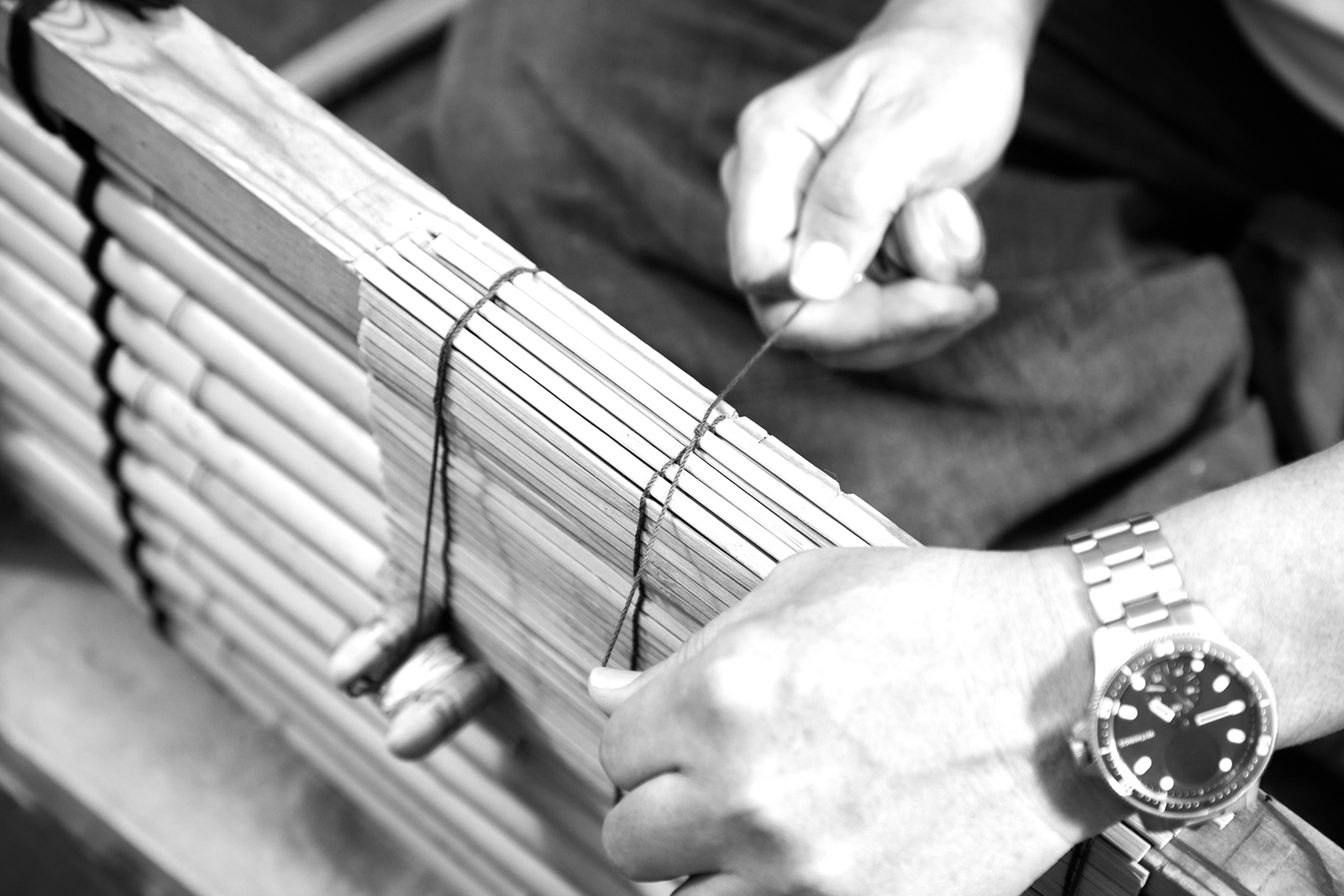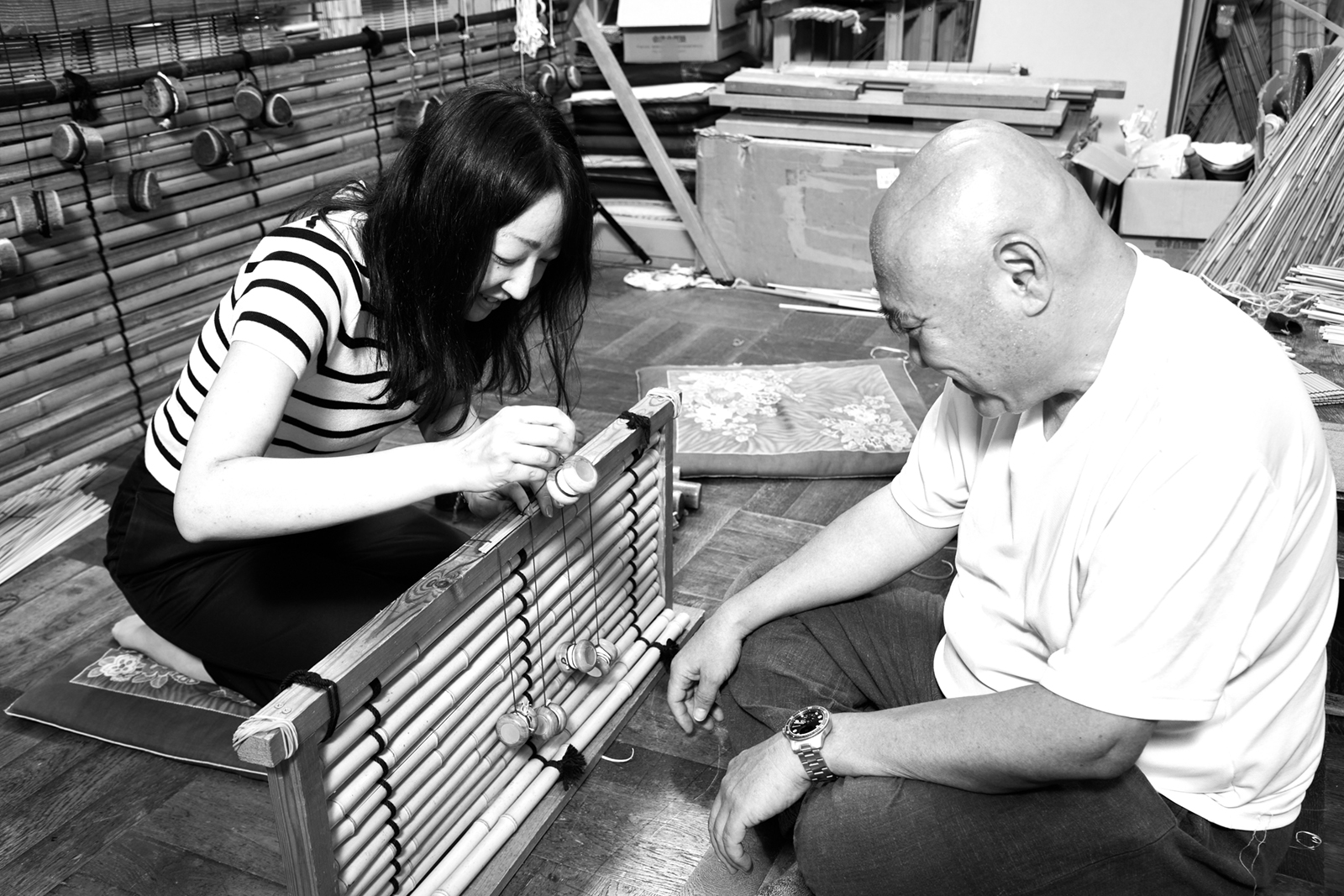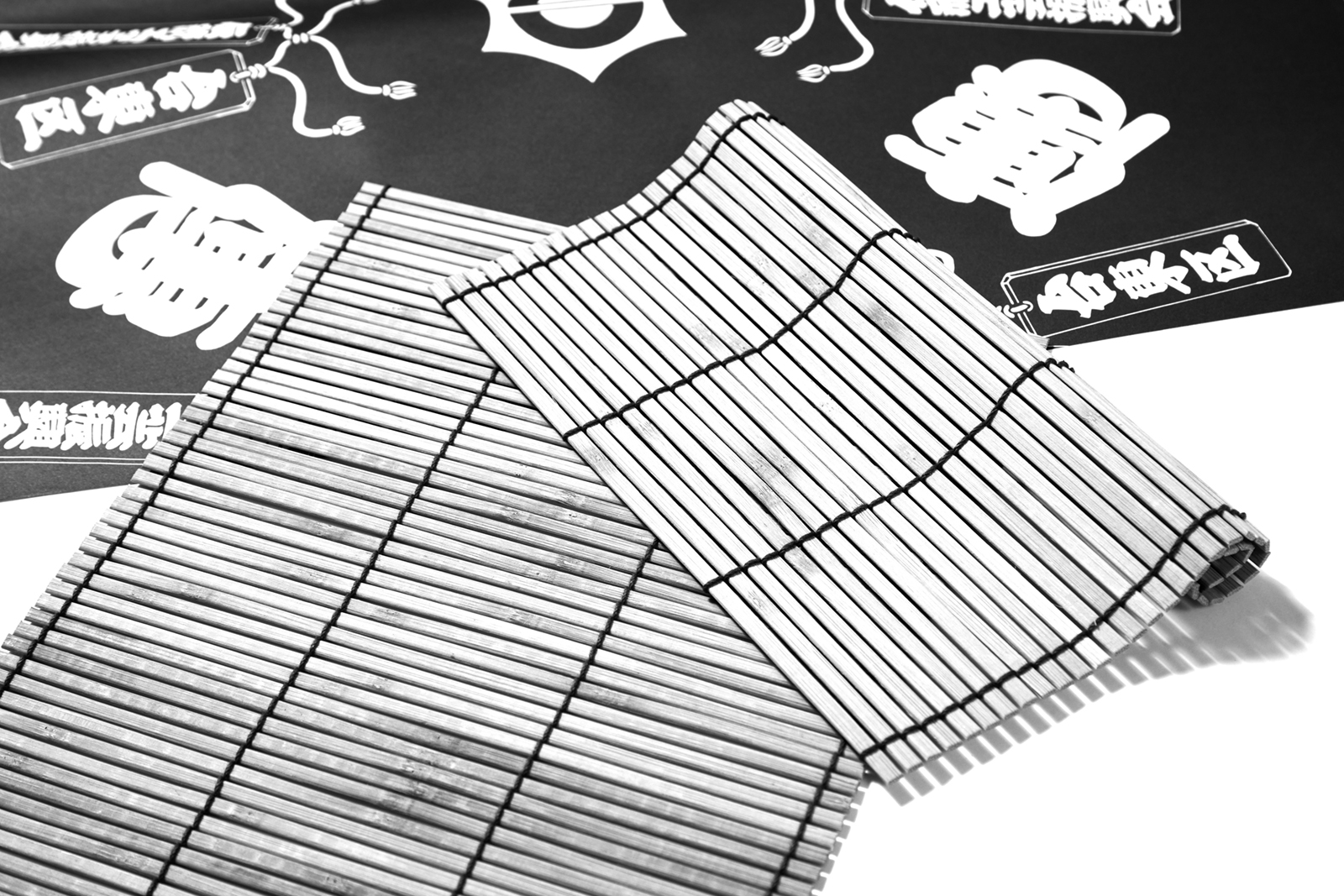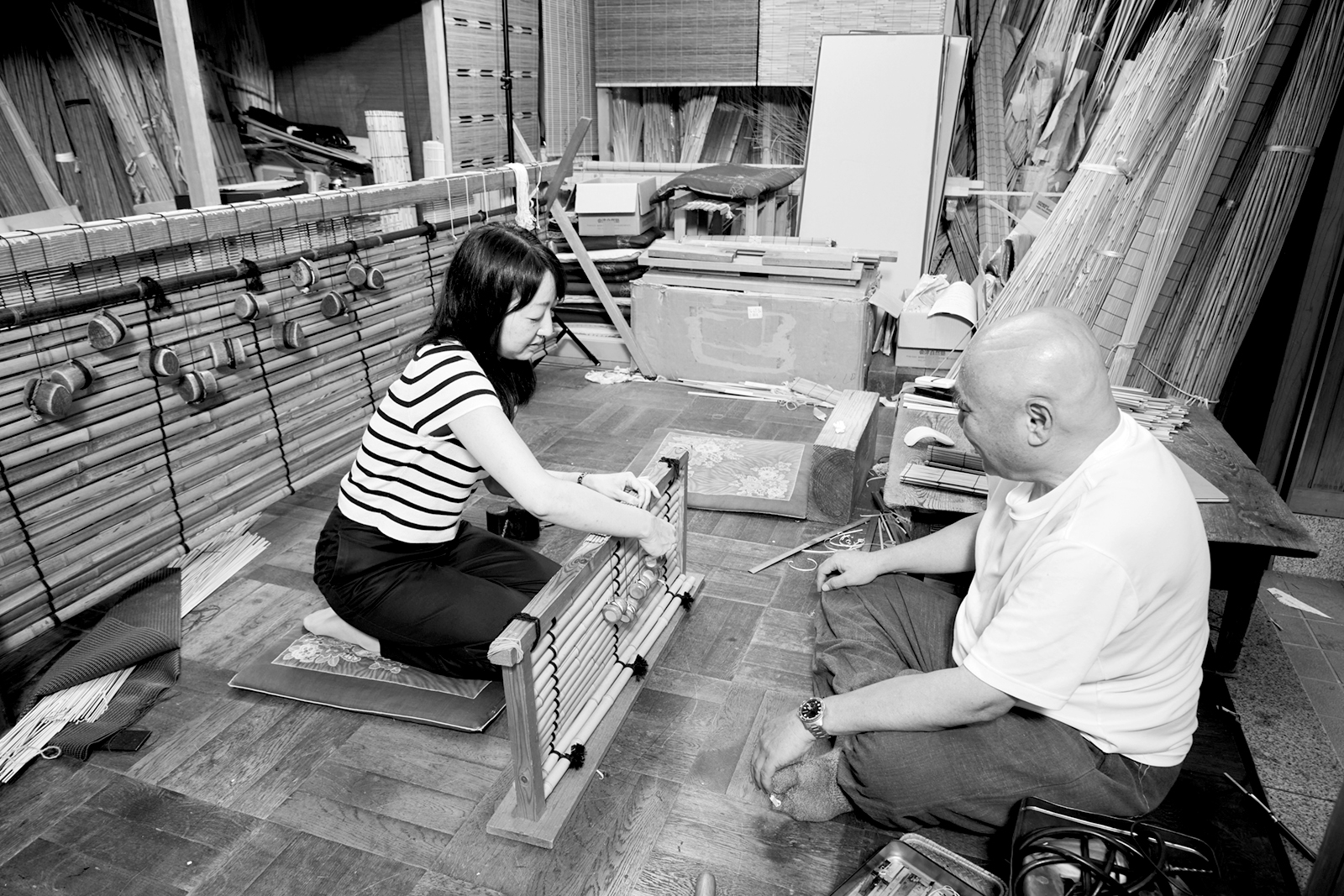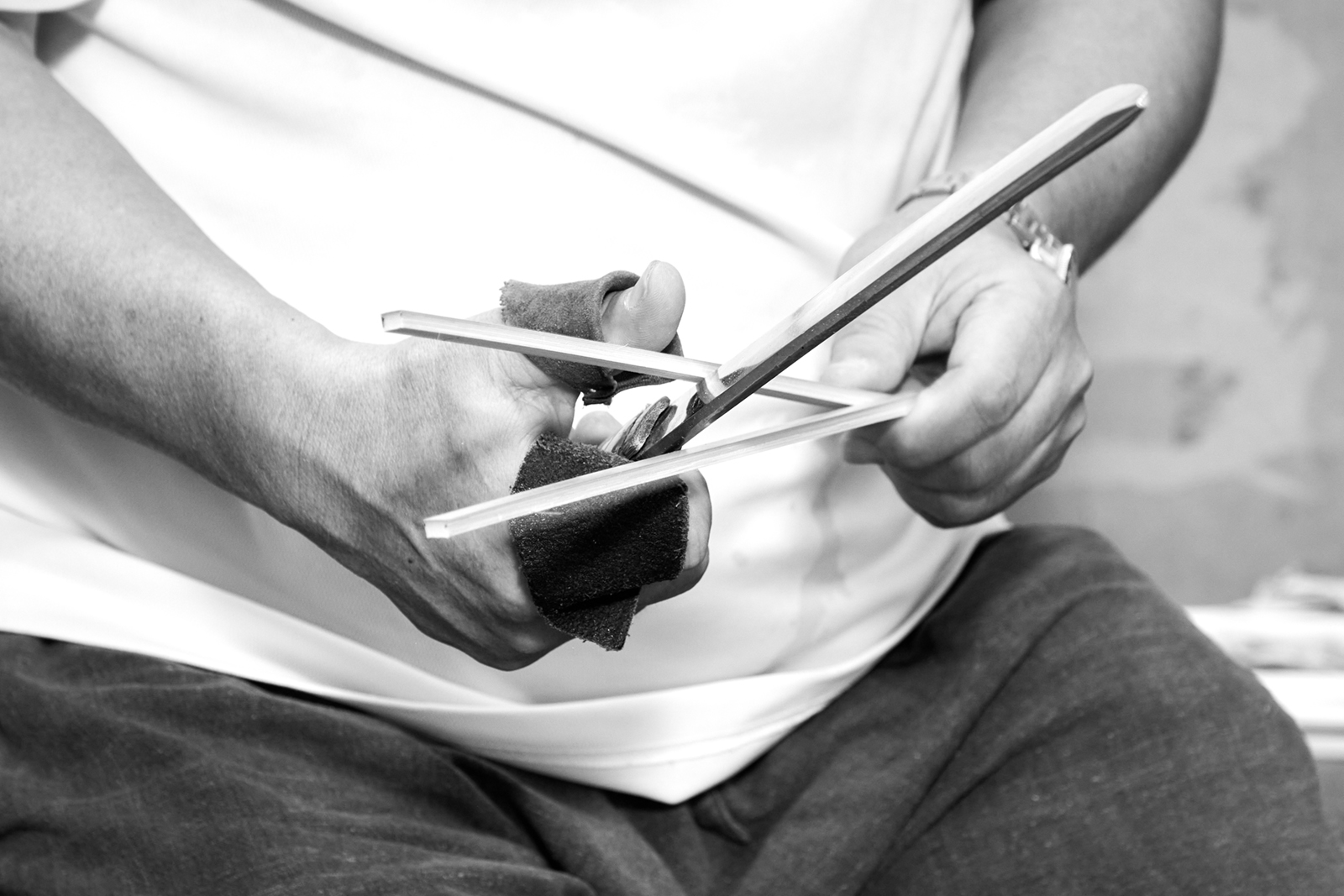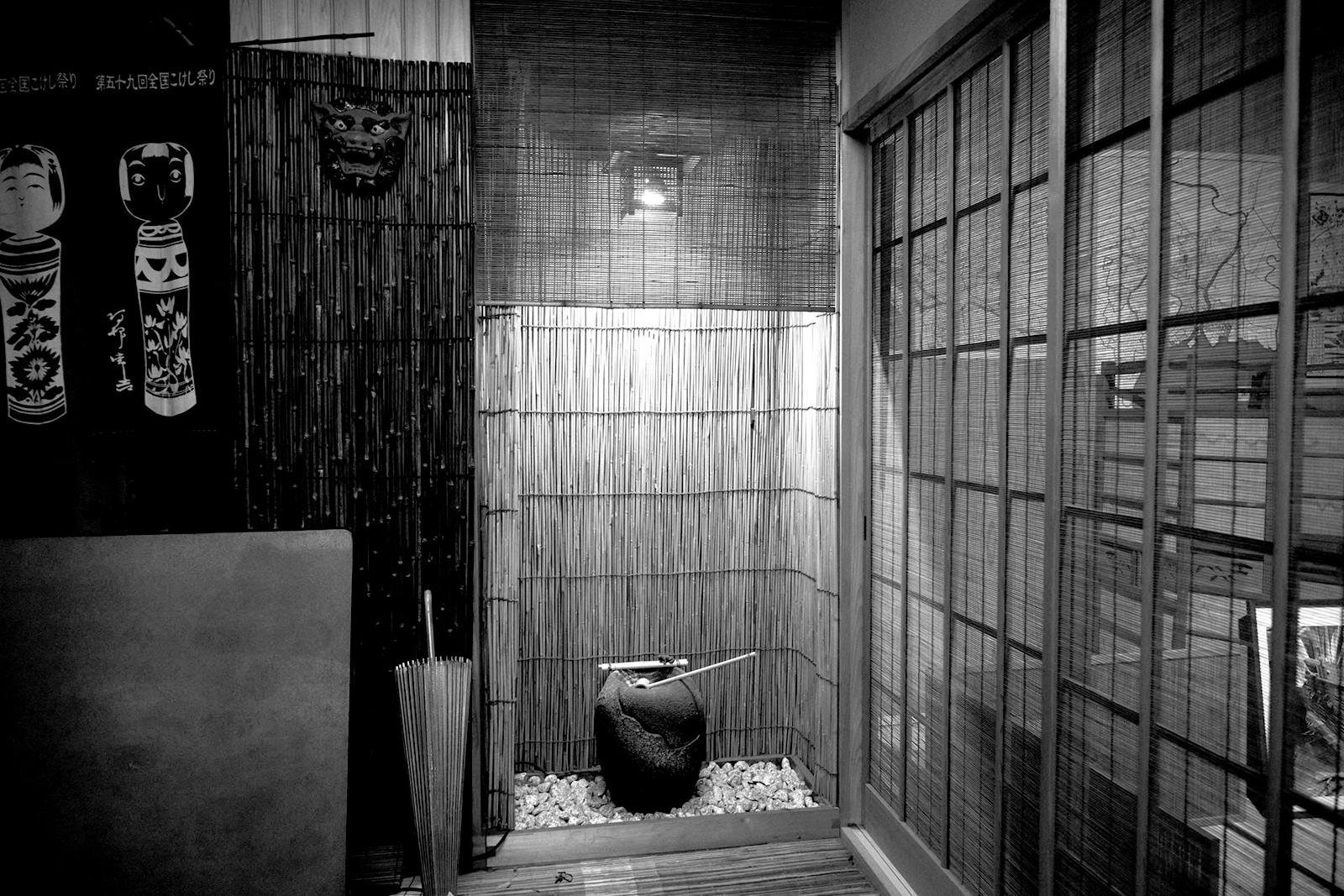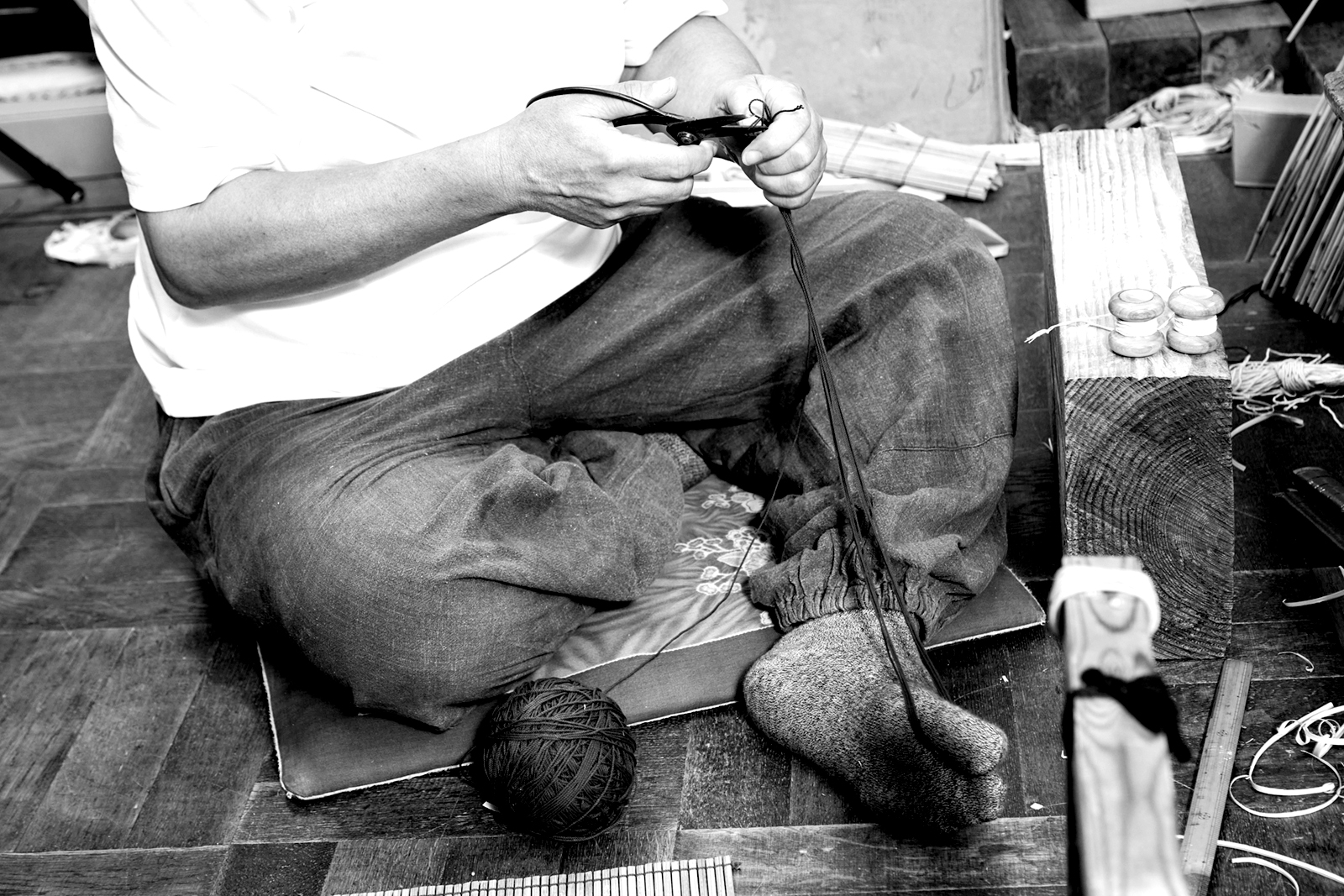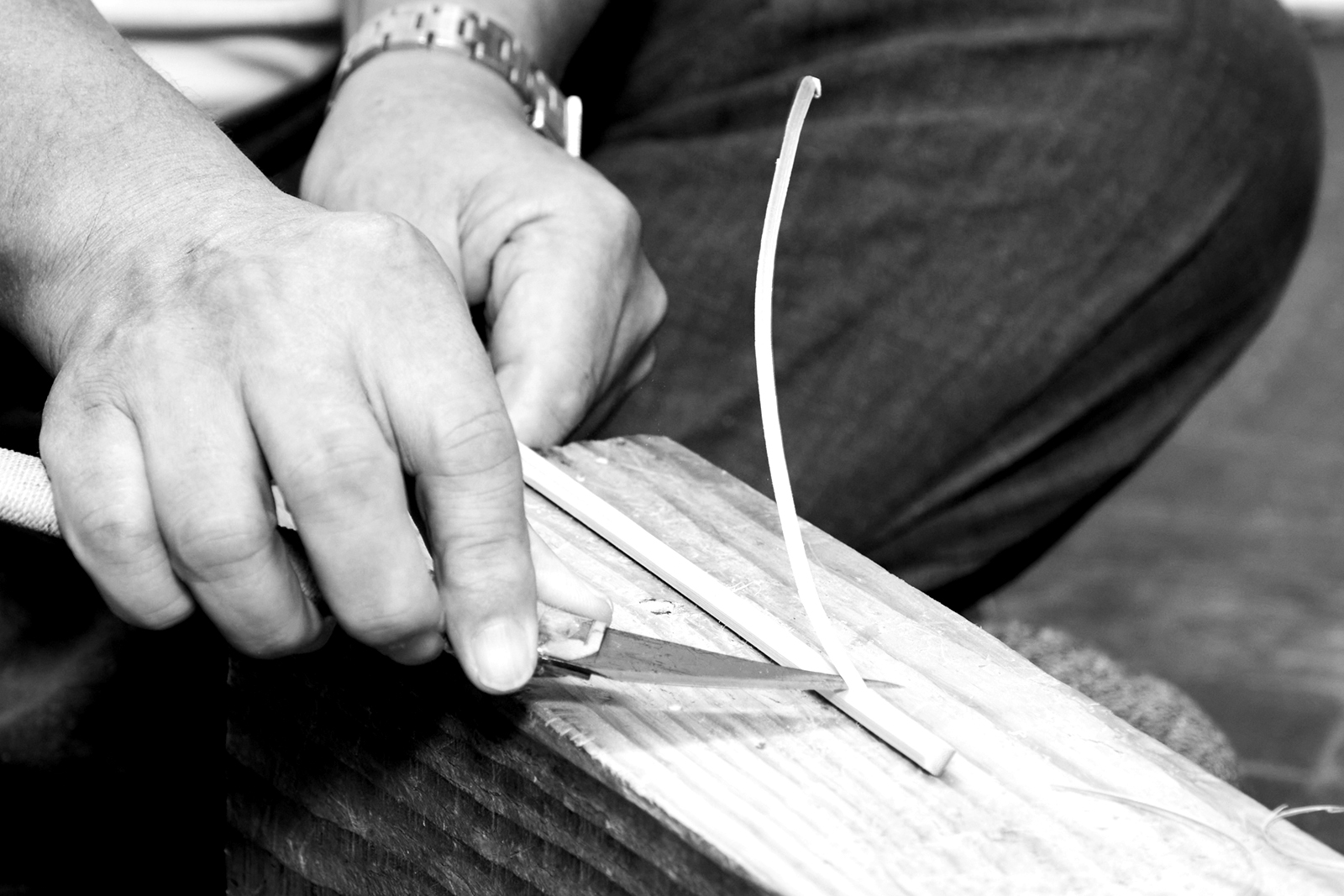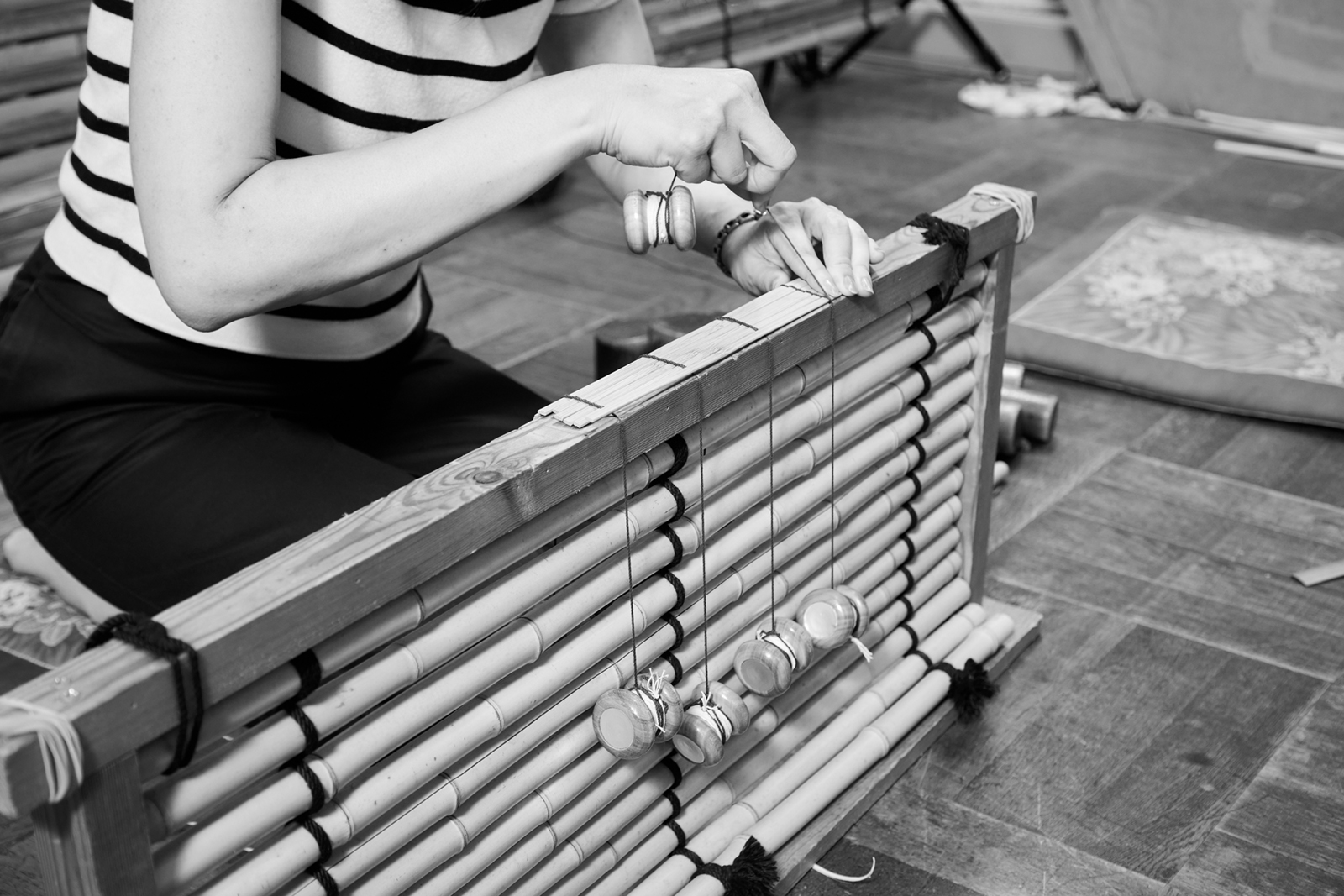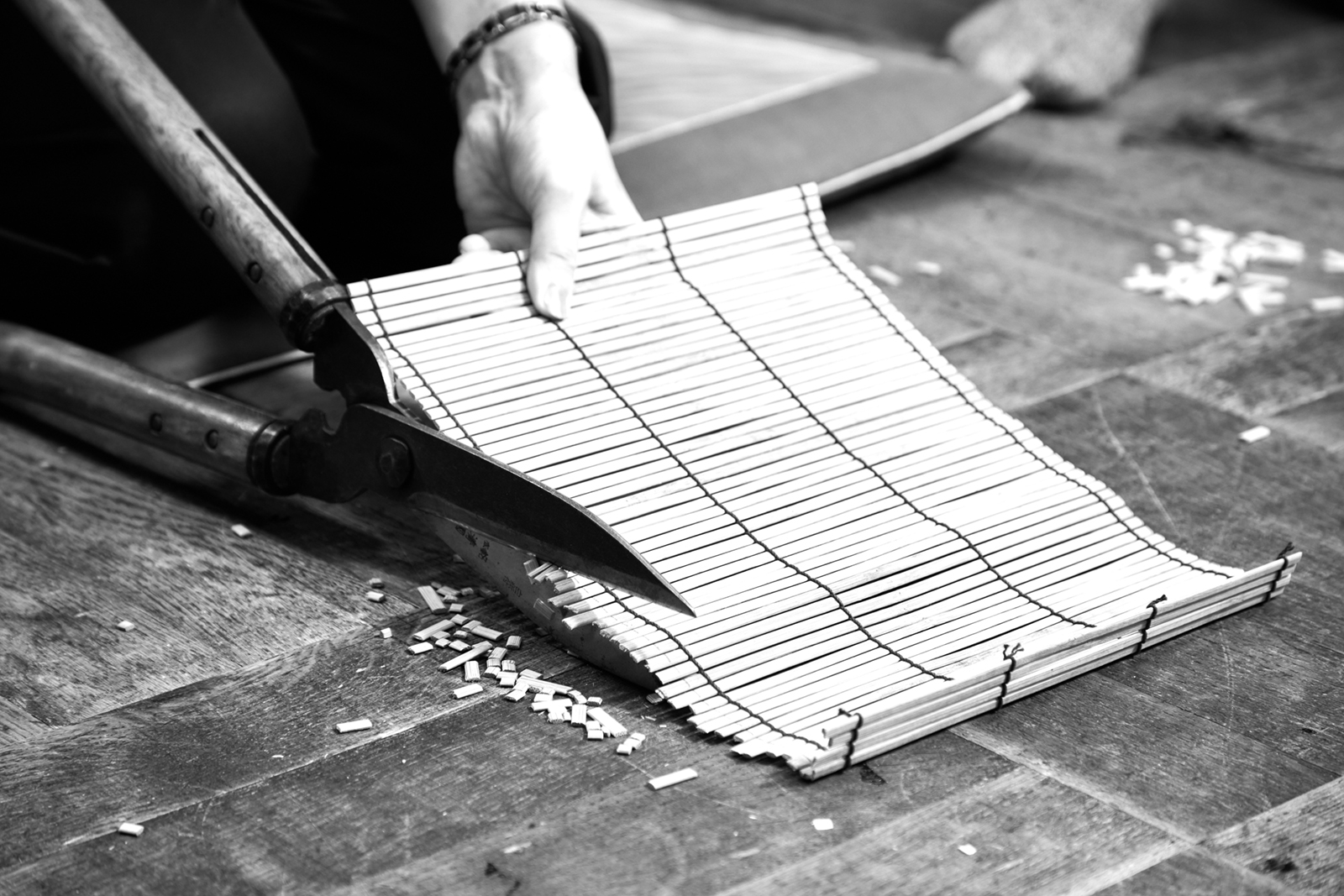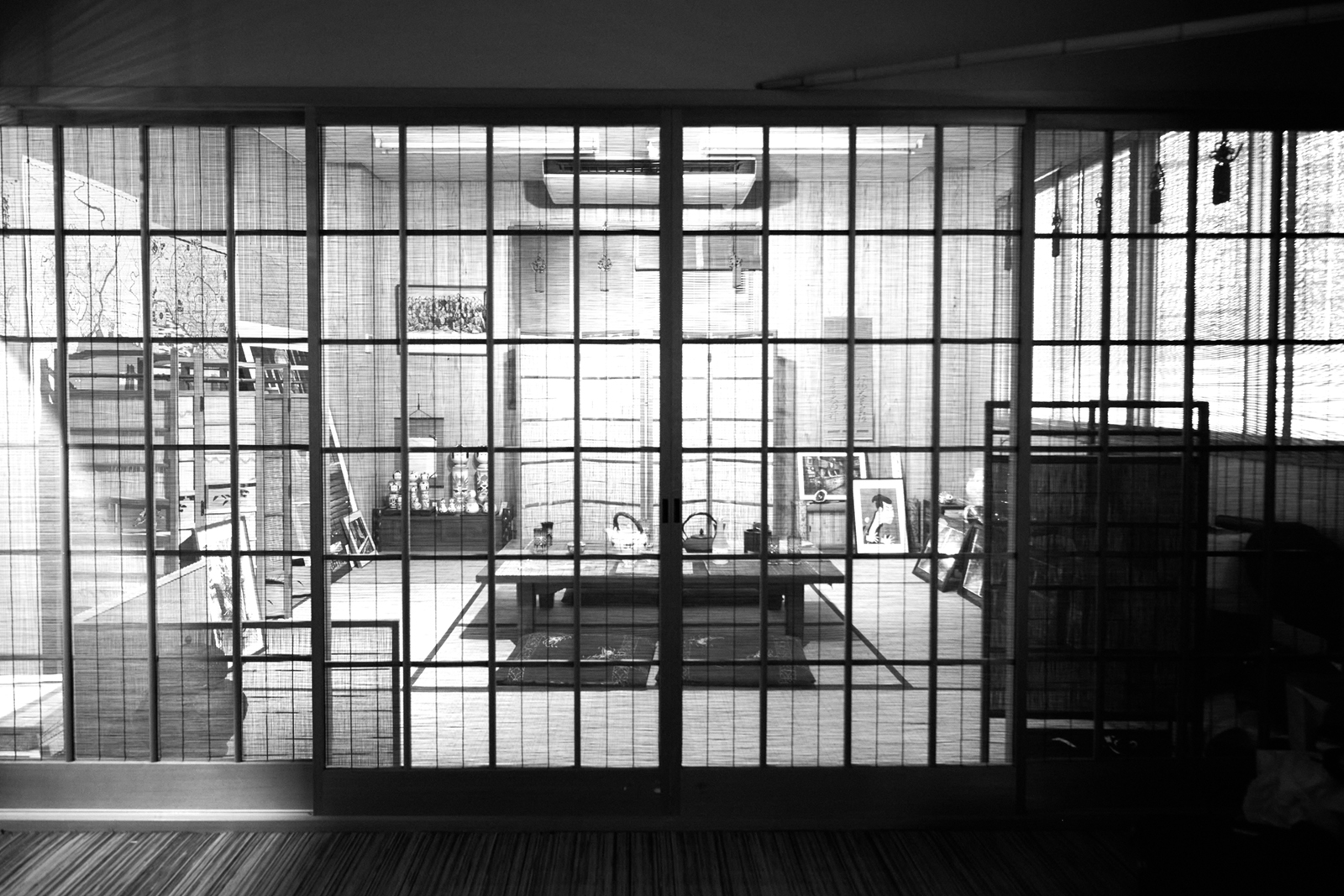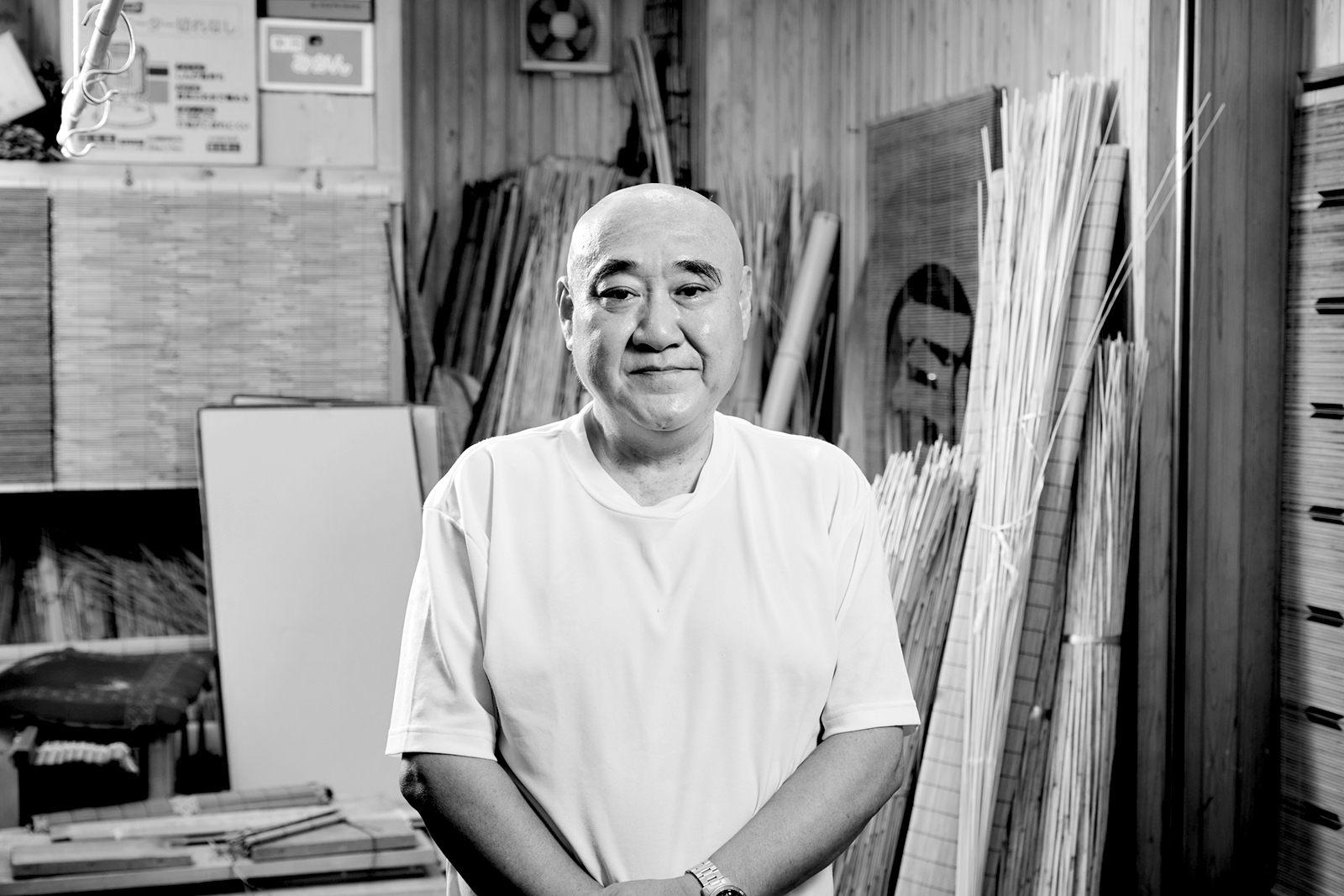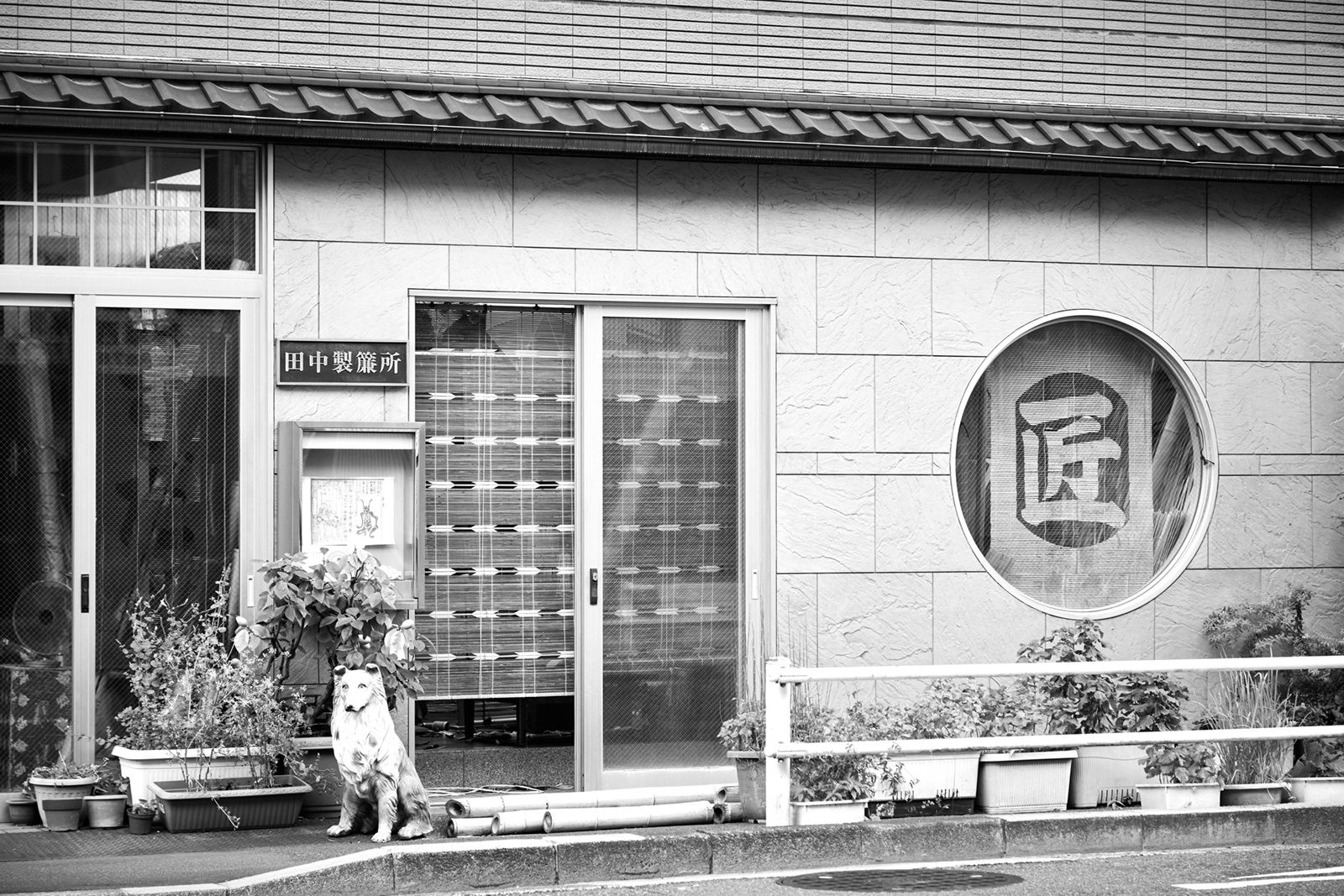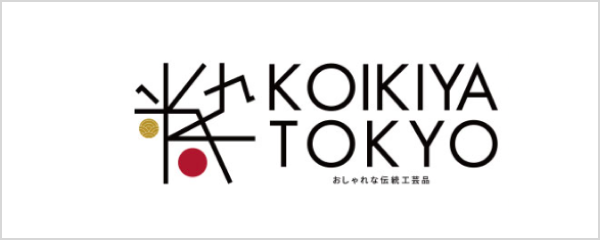Tanaka Seirenjo has developed alongside the progression of Edo-Sudare slatted blinds
Sudare slatted blinds, made by weaving thin bamboo or reeds together with thread, have been used since ancient times as room partitions, sunshades, and privacy screens. They are said to have become widespread among the nobility in the late Nara period (circa 780), and records of them remain in the Man'yōshū (circa 760), Japan's oldest Waka poetry anthology, and in the Pillow Book (circa 1000), the Heian period essay
In the Edo period, Sudare slatted blinds that had developed in Kyoto, then spread to Edo, and the blinds became commonplace throughout the city. Once considered the domain of the noble households, sudare slatted blinds became accessible to commoners as Edo's merchant culture flourished. As these blinds spread from wealthy merchant households to ordinary homes, the design evolved into the simple and convenient Edo-Sudare slatted blinds seen today.
Tanaka Seirenjo was founded around 1870, amidst the transition from the Edo period to the Meiji era. Mr. Tanaka Nisuke, founder and rice wholesaler, started making Sudare slatted blinds in Honjo-Wakamiyacho (present day Ishihara, Sumida-ku). Due to changes in the artisan population, Tanaka Seirenjo relocated to Asakusa in 1905. In 1912, the company relocated to what is now Senzoku. Even after weathering earthquakes and world wars, they continue to craft hand-made Sudare slatted blinds while preserving time-honored techniques.
Create a bamboo placemat woven with traditional Sudare slatted blinds techniques
In this plan, you will craft bamboo placemats woven with Sudare slatted blinds crafting techniques. But first, you will hear a lecture from the fifth-generation shop head, who is the sole certified Tokyo Traditional Craftsperson for Edo-Sudare and a certified “Tokyo Meister” (Tokyo Expert). You will also be able to observe the production process. The tips are marked on bamboo that has been split flat beforehand, then the blade is placed on each mark and cuts through in one swift motion. The fibers of bamboo run straight vertically, so it splits more easily than its hard appearance might suggest. The joints are somewhat firm, as the bamboo splits cleanly, you will feel the magical strangeness of the natural world.
After the bamboo is split into thin strips, the surface is shaved with a small knife. At this stage, the bamboo slats have slightly differing shapes, so making them somewhat uniform is what brings quality to the finished Sudare slated blinds. In recent years, there are machines that shave bamboo automatically, but depending on the condition of knots and fibers, the bamboo can become prone to cracking. Only the hands of an artisan with years of experience can assess the condition of each bamboo stalk individually and choose the cutting method that ensures strength and longevity.
The rhythmic sound of the weight balls hitting Keta (work surface) beckons your inner world
Following the lecture and display of traditional craftsmanship, it is time to weave a placemat using the Sudare slatted blinds crafting technique. Place a thinly shaved bamboo strip on top of the four threads which have been placed on Keta weaving panel. Small balls are tied to both ends of the strings to serve as weights. Bring the back ball forward and move the front ball to the back, weaving back and forth in a manner that wraps the bamboo with the thread. After weaving all four strands, place the second bamboo strip on top. The key to a clean finish is to fit the bamboo strips together tightly, leaving no gaps.
At first, you may feel slightly nervous while weaving, but after repeating the process a few times, it will start to feel more natural. By the time the sound of the weight balls hitting the Keta panel begins to clack rhythmically, you'll be working without even having to think about each move. The sound of the balls and the time spent completely enveloped in the bustle of the Senzoku area may transform into the precious experience of immersing in introspection while crafting sudare slatted blinds.
After weaving approximately 50 bamboo strips while adjusting any thread misalignments along the way, trim both ends with scissors to complete the piece. At first glance, this placemat resembles traditional Japanese-style Sudare slatted blinds, but its simple design complements Western tables and tablecloths. Spend moments with this mat during your breaks from the day, like at meals or tea time.
Feel enveloped within the flow of history and the spirit of the area with the everyday presence of Sudare slatted blinds
After the activity ends, it is time for a tour of the showroom on the second floor of the workshop. Enjoy displays infused with a sense of homespun living, showcasing how Sudare slatted blinds are used and the roles they play in people's daily routines.
Sudare slatted blinds, which have remained a part of everyday life, transcend the role of mere furnishings and have continued to cultivate Edo culture. Mr. Kotaro Tanaka, the fifth-generation shop head and preserver of traditional techniques, comments, “I hope people to feel the flow of history and the spirit of the area through Sudare slatted blinds, which have remained part of people's lives throughout the eras.” When you enjoy peaceful moments with your placemat, reflect back on your experience encountering the essence of the Edo culture and your memories of the activity that allowed you to connect with your inner self.
Established in the early Meiji era by a founder, Mr. Tanaka Nisuke in Honjo-Wakamiyacho (present day Ishihara, Sumida-ku). In 1905, the company relocated to Asakusa, and in 1912, to Senzoku. It preserves the traditional techniques of Edo-Sudare slatted blinds dating back to the Edo period and also creates Sudare slatted blinds with designs suited to modern lifestyles. Edo-Sudare were officially designated as a Tokyo Traditional Craft in 1983.
